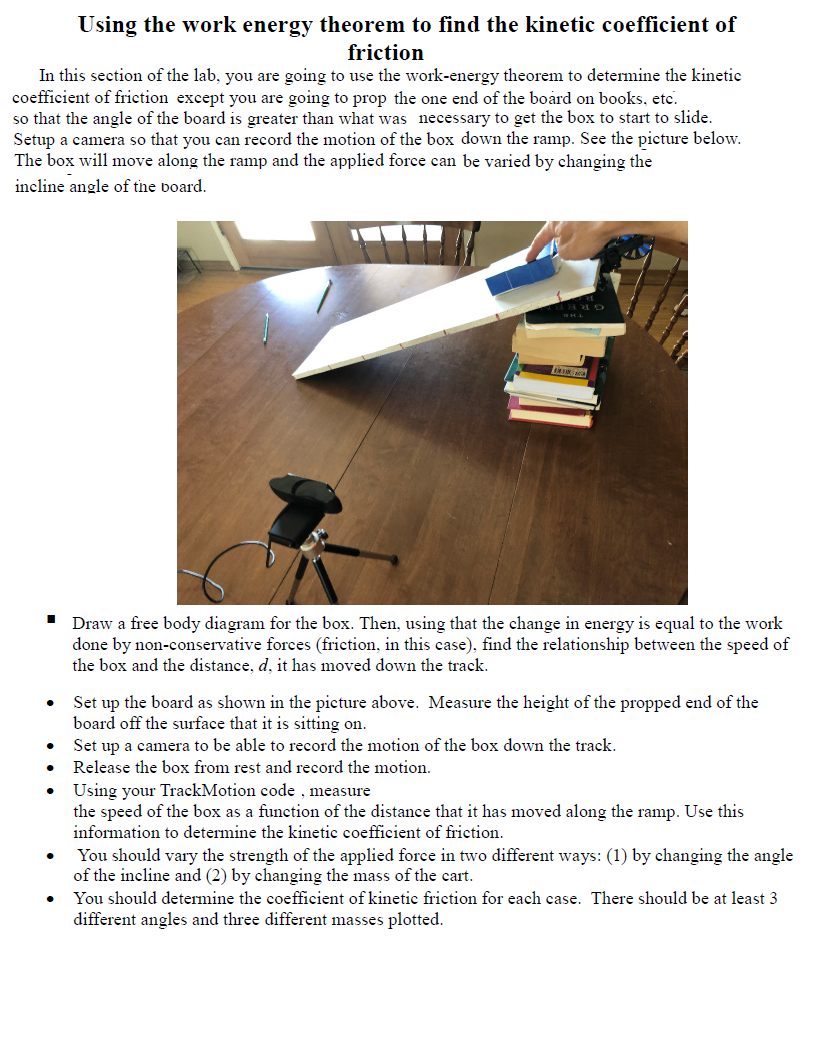Home /
Expert Answers /
Physics /
nbsp-using-the-work-energy-theorem-to-find-the-kinetic-coefficient-of-friction-in-this-section-pa238
(Solved): Using the work energy theorem to find the kinetic coefficient of friction In this section ...
Using the work energy theorem to find the kinetic coefficient of friction In this section of the lab, you are going to use the work-energy theorem to determine the kinetic coefficient of friction except you are going to prop the one end of the board on books, etc. so that the angle of the board is greater than what was necessary to get the box to start to slide. Setup a camera so that you can record the motion of the box down the ramp. See the picture below. The box will move along the ramp and the applied force can be varied by changing the incline angle of the board. ? R Draw a free body diagram for the box. Then, using that the change in energy is equal to the work done by non-conservative forces (friction, in this case), find the relationship between the speed of the box and the distance, d, it has moved down the track. Set up the board as shown in the picture above. Measure the height of the propped end of the board off the surface that it is sitting on. Set up a camera to be able to record the motion of the box down the track. Release the box from rest and record the motion. Using your TrackMotion code, measure the speed of the box as a function of the distance that it has moved along the ramp. Use this information to determine the kinetic coefficient of friction. You should vary the strength of the applied force in two different ways: (1) by changing the angle of the incline and (2) by changing the mass of the cart. You should determine the coefficient of kinetic friction for each case. There should be at least 3 different angles and three different masses plotted.
Using the work energy theorem to find the kinetic coefficient of friction Free-body diagram for the box and equation relating the speed to the distance traveled down the ramp. Free-Body Diagram for Cart Relationship between speed and distance b) In your experiments, how did the kinetic coefficient of friction depend on the mass of the box? Does this agree with the equation you found above? c) How did the kinetic coefficient of friction that you found here compare to the coefficient of kinetic friction that you found in Week 7? Discuss any differences between the values you found and sources of error. Which method do you feel works better? Explain.

